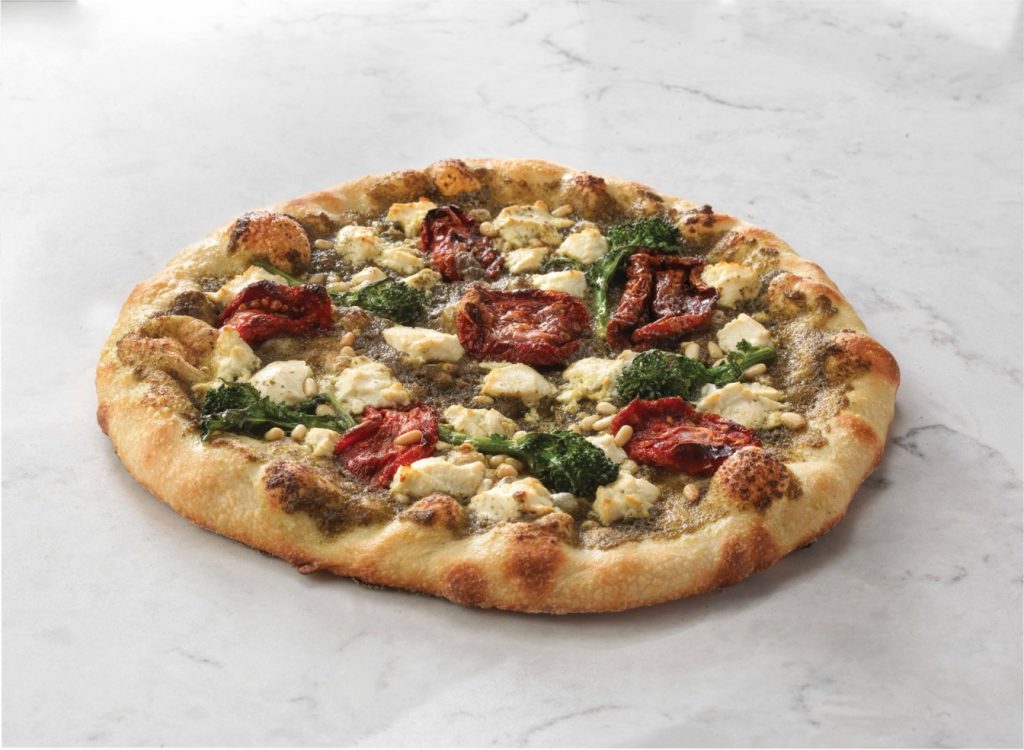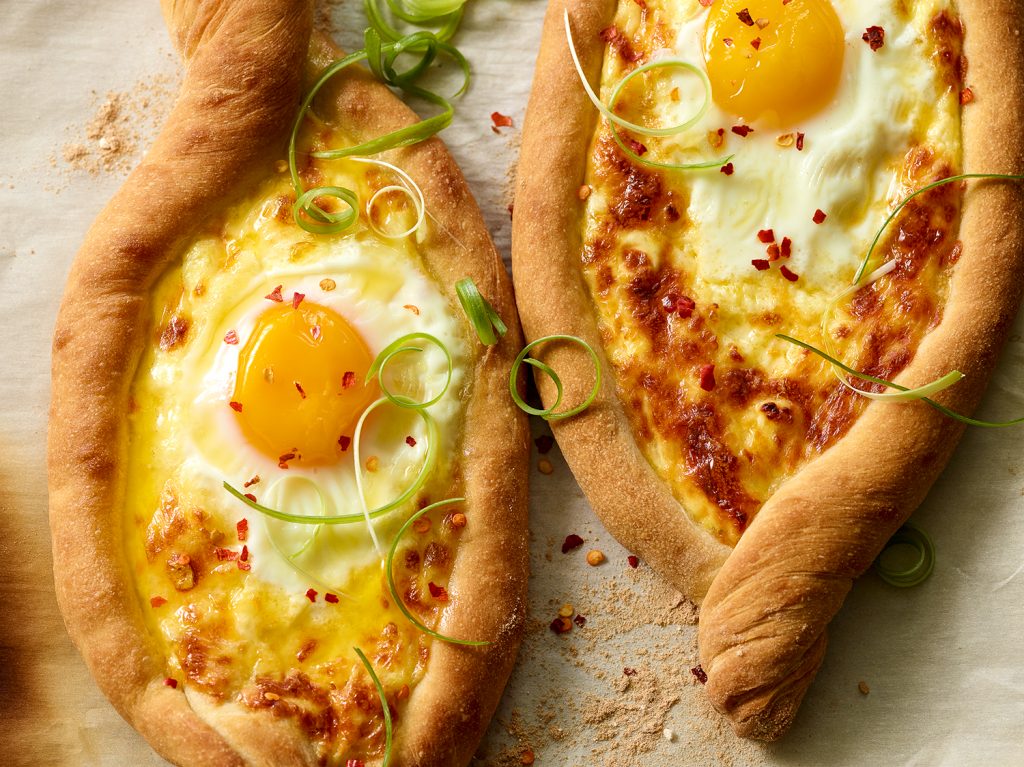The Upper Crust: Insights and tips for pizza crusts and toppings that will put your pizza a slice above the rest
From consumer insights to menu innovation, Ardent Mills is at the leading edge of what’s happening in pizza so you’re ready to deliver what’s next. According to our 2017 proprietary pizza study, 60 per cent of pizza consumers consider the type of crust an important purchase factor when choosing a pizza (Ardent Mills Pizza Crust Study, September 2017).
Regardless of pizza shape or size, pizza operators understand the benefit of innovating around the crust, which has driven the recent crust premiumization we are seeing in the market.
1. Flour Power
Heartier toppings need sturdier dough to carry the load. The right flour, dough thickness and length of fermentation can make all the difference. When it comes to preferred crust styles, research shows thin crust is the most prevalent pizza crust; it is called out on 16 percent of menus in Canada, followed by pan pizza at seven percent, thick crust at five percent and New York-style at four percent (Ardent Mills Pizza Crust Study, September 2017). Pizza makers should experiment with several types of flour and grain combinations to find the right balance for their best-selling toppings.
2. Taking the Heat
High-heat pizza ovens fueled by wood or gas can crank the heat as high as 480°C (900°F) for quickly prepared, customized pies in fast-casual, campus dining and other settings with a need for speed. High heat also delivers a distinctly crispy crust exterior.
This is the perfect oven for thin Neapolitan-Style pizzas, and using the right flour ensures that you get the right bite and chew. Pizza can also take the heat and deliver when it comes to spicy toppings. Sriracha and Buffalo sauce are popular ways to switch up traditional tomato sauces, while jalapeños and spicy cured meats are topping specialty pizzas (Mintel Menu Insights, 2019).
3. Regionality & Authenticity
Consumers are on the hunt for the real deal – food prepared with traditional methods and ingredients. Passion for U.S. regionality carries over into Canada and provides operators with an opportunity to cater to specific cravings.

For example, 64 per cent of consumers say they are interested in trying thick, square Detroit-style pizza (Mintel Menu Insights, 2019). When it comes to regional Italian pizza specialties, Neapolitan-style pizza hits all the right notes and has grown more than 250 percent from 2017 to 2019 (Mintel Menu Insights, 2019).
4. Do More With Your Dough
Great pizza dough is a versatile ingredient that can add value across all menu and day parts. Shareable, dippable garlic knots and bread sticks are a fun appetizer while thin flatbread makes a great sandwich, lunch item or starter. Egg-topped pizzas are a new way to innovate your breakfast menu. Or try a Khachapuri, a traditional Georgian cheese bread. This hot brunch item can be found on trendy menus in places like New York City – and what’s not to love about an egg- and cheese-filled bread? For a sweet way to capture dessert sales, consider chocolate, fruit or custard pizza creations.
5. Clean & Green
Pizza is a well-loved indulgence, but newer styles are serving up health-conscious and diet-specific options. Technomic’s 2018 Canadian Healthy Eating Consumer Trend Report shows that 29 per cent of consumers are more likely to visit a restaurant that offers healthier options, even if people don’t end up ordering a healthier dish (Ardent Mills Pizza Crust Study, September 2017).
Crust for consumers that follow vegan and gluten-free diets and lifestyles can help feed some health-minded consumer demands. Whole grain crusts, no artificial preservatives, nitrate-free pepperoni, non-GMO and organic flours and grains can satisfy consumers who prefer “cleaner-label” ingredients.

Toppings like roasted root vegetables and crust add-ins such as quinoa, chickpea flour and spelt can bring more nutrition, texture and flavour to pizza recipes. In fact, quinoa is one of the most popular ingredients in foodservice and one of the fastest-growing grains, increasing in popularity by 21 per cent between 2016 and 2017 (Technomic 2018 Canadian Healthy Eating Consumer Trend Report).
6. Rustic Crusts & Preparations
Many consumers find beauty in imperfect pies and crave foods prepared using artisan methods and ingredients. Our consumer studies find menu descriptors like “hand-crafted,” “hand-stretched” and “wood-fired” are appearing more frequently on menus and can help to elevate your pizza offerings (Mintel Menu Insights, 2019). Further enhance “hand-crafted” appeal with rustic, or irregularly shaped crusts, longer dough fermentation, chunky vegetables and sauces like fire-roasted San Marzano tomato sauce.
7. The Details are in the Dough
From food trucks to fine dining, today eating out is as much about the experience as it is about the food. Consumers want to connect to the specific ingredients they eat – from local heirloom tomatoes to organic and ancient grains. Instead of “multigrain pizza crust” listed on a menu, restaurants should consider including brief descriptions of each individual grain, as well as the oven style, farm-to-table sourcing and even their chef’s travels and training. Share those unique details with your customers that make your pizza distinctive and delicious, and they’ll keep coming back for more.









